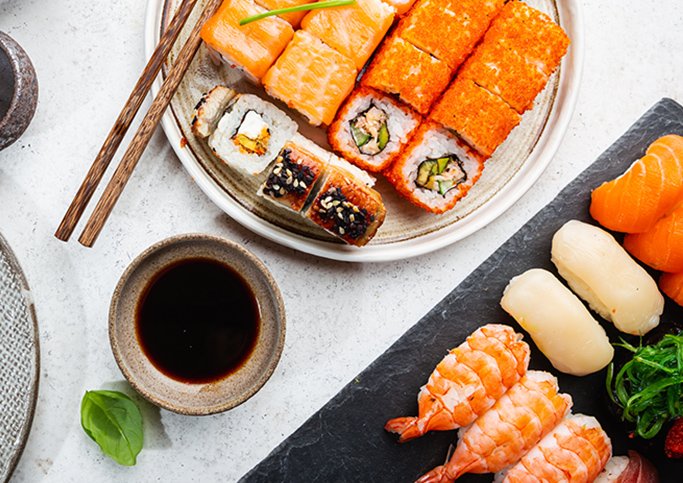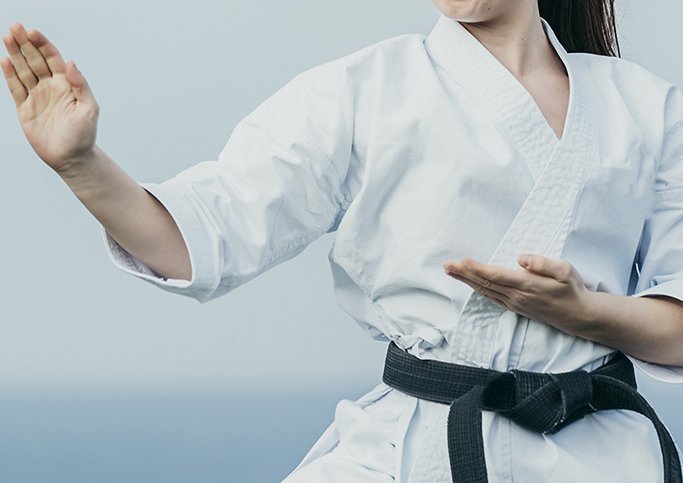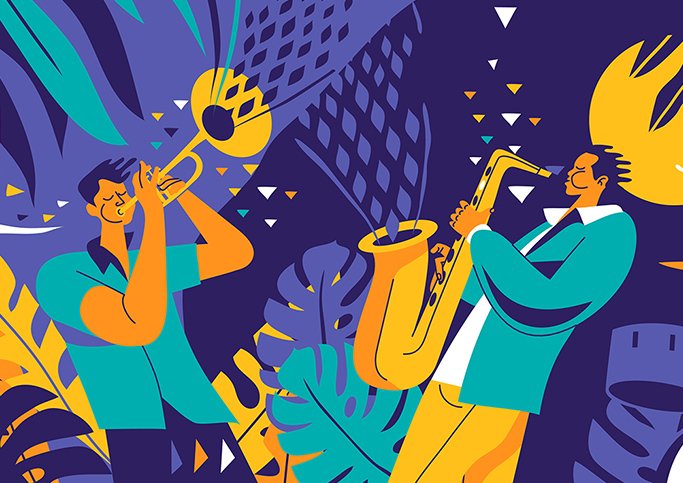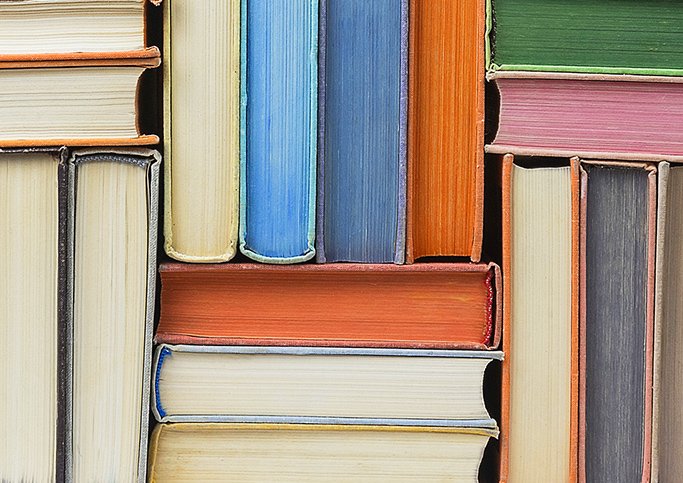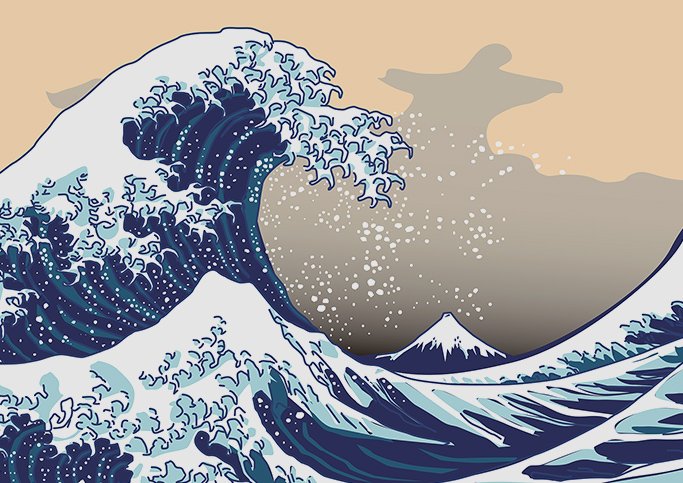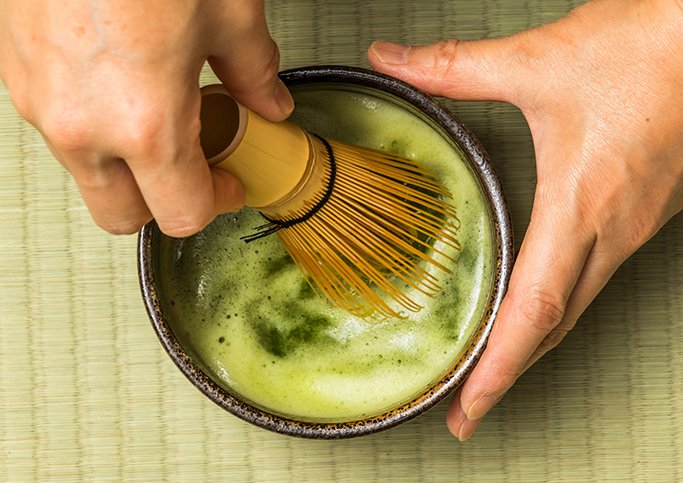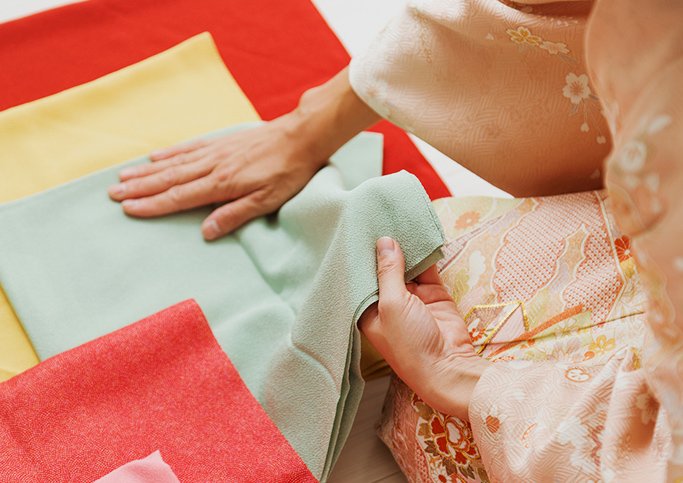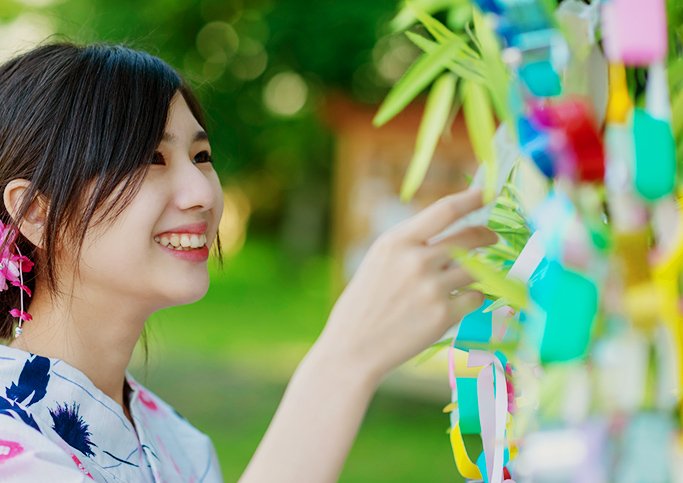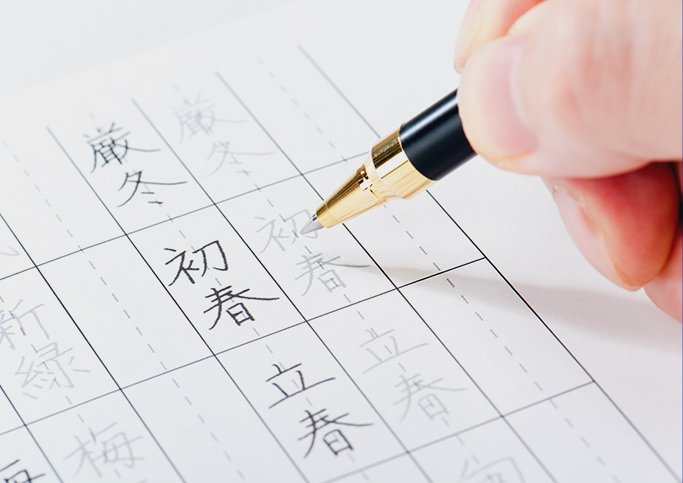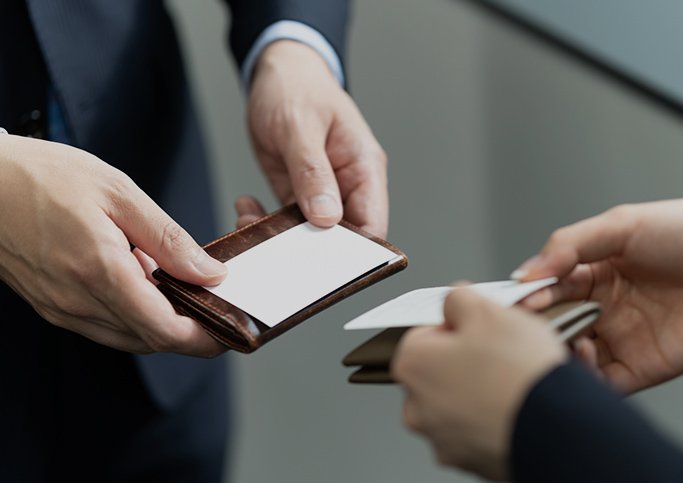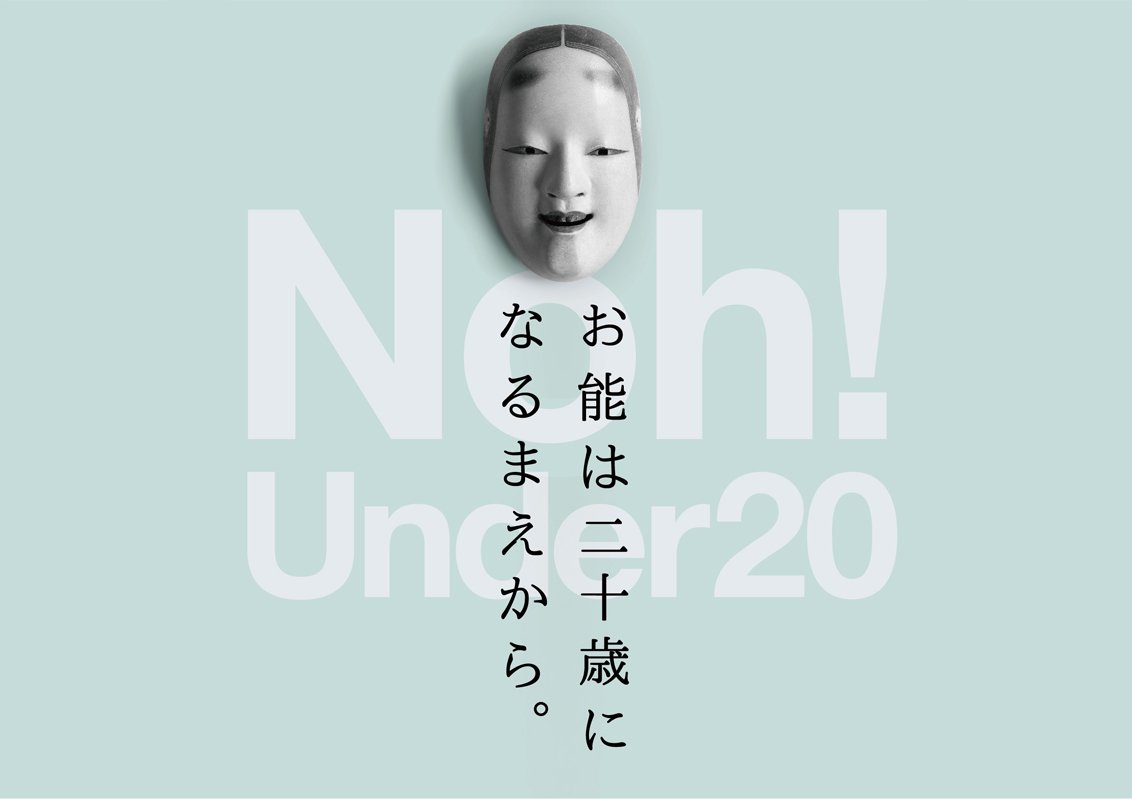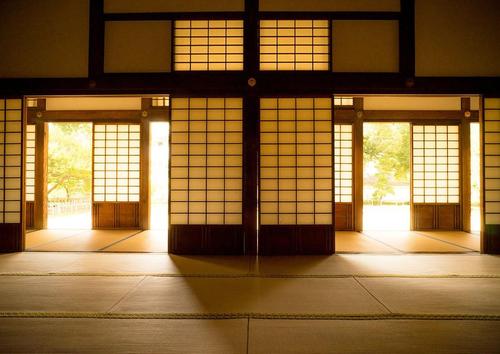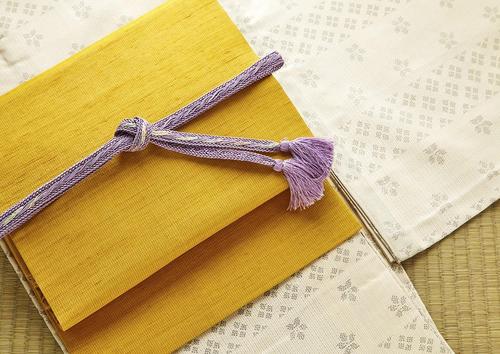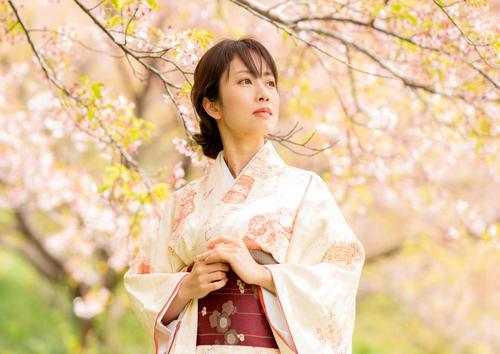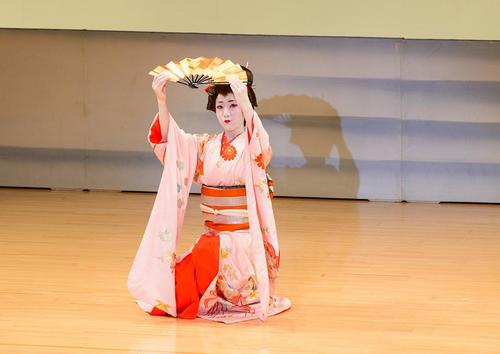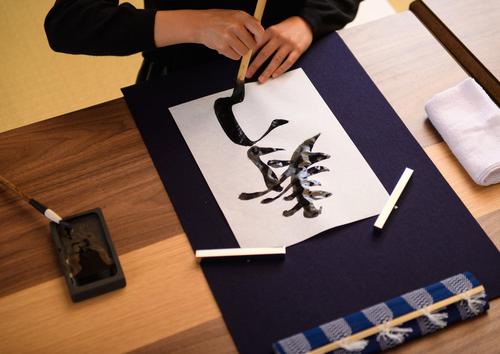
way
Calligraphy, which is one of the Japanese cultures, is gaining popularity overseas due to its simple beauty. Even though all Japanese people know it, when we try to explain in detail what calligraphy is, its origins and behaviors, we often do not know it.
Here, we will explain the outline of calligraphy as Japanese culture, and the basic actions and typefaces. How about reaffirming the goodness of calligraphy by understanding the basic knowledge of calligraphy?
What is traditional Japanese culture "calligraphy"? 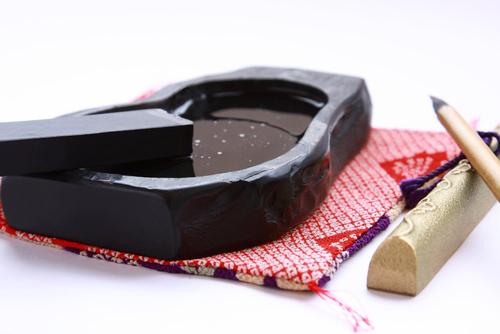
First, I will give an overview of Japanese calligraphy.
What exactly is calligraphy?
Calligraphy is one of the expression methods to write letters on paper using a writing instrument called "brush" and ink, and to convey one's thoughts through the letters and typefaces. It can be said to be art or art because it is not only a means of writing letters but also a means of self-expression.
Calligraphy requires you to develop your concentration and acquire the skills to become a "Noh brush" for writing beautiful characters, so it is thought to be a training and training for your spirit.
As a preliminary step to calligraphy, there is "calligraphy" learned at school, but there is a big difference between calligraphy and calligraphy, "whether or not there is self-expression". In calligraphy, the purpose is to write beautiful, well-balanced characters in the correct stroke order, while in calligraphy, boldly broken characters are also used. This is because the purpose is to express power, delicacy, and sadness with written characters.
Calligraphy can be roughly divided into "Kanji" and "Kana", and if you include "Kanji Kana", which is a mixture of both, you can roughly divide it into three.
[If you read the article, may you know the meaning of this KARUTA? ]
Origin of calligraphy
It is said that the origin of calligraphy began when it came from China to Japan. Calligraphy developed in China, which has a Chinese character culture, and was introduced to Japan as a sutra copy along with Buddhism from the 6th to 7th centuries, from the Asuka period to the Nara period. Along with calligraphy, you will also learn how to make brushes and ink, and how to make paper.
Being able to write with a brush and ink was considered to be one of the important cultures for samurai and aristocrats at that time. Like many other cultures, arts, and entertainment, calligraphy is becoming more widespread not only among samurai and aristocrats, but also among the common people as the times progress.
Most Japanese have the opportunity to come into contact with the calligraphy that is the entrance to calligraphy, such as calligraphy classes and school lessons. It can be said that it is deeply rooted in.
Basic behavior of calligraphy
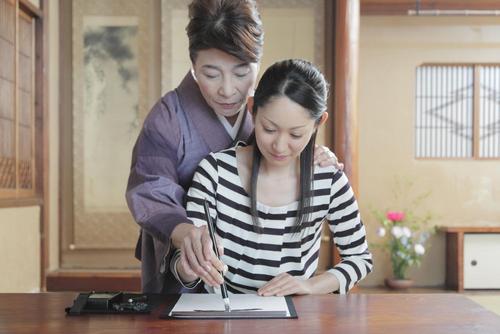
Next, I will explain the basic behavior of calligraphy in Japan.
How to sit
The basic way to sit down when doing calligraphy is to sit upright on a cushion. If you are not accustomed to sitting upright, or if you have back pain or joint pain and it is difficult to sit upright, you can sit on a chair or use assistive devices for sitting upright, but do not tilt to the desk. Is important.
Posture, how to hold the brush
As with sitting, straighten your back. Be careful not to write on your back or lean your hands.
When rubbing the inkstone to make ink, add a little water to the recessed part at the top of the inkstone and gently rub the ink. If you concentrate your mind and rub the ink slowly for a while, the ink will gradually dissolve in the water and the ink will form.
When the ink is ready, soak the brush with ink. Use your thumb, index and middle fingers to hold the middle of the brush. When writing with a pencil, the pencil is tilted a little, but when writing with a brush, the feature is to hold the brush straight. When writing letters, it is a good idea to lightly hold the paper with your non-dominant hand (the hand that writes the letters).
Clothes
When it comes to calligraphy, there are no special clothes such as "kendo clothes" or "judo clothes", and you can basically write in any clothes you like. However, you should avoid white clothes or new clothes, as the ink may fly off and get dirty.
Puffy cuffs, fringed hem, and large open cuffs such as bell sleeves are not recommended as they can be soaked in inkstones. It is safe to do calligraphy by wearing black clothing or clothing that you no longer wear.
There are five main types of kanji for brushstrokes.
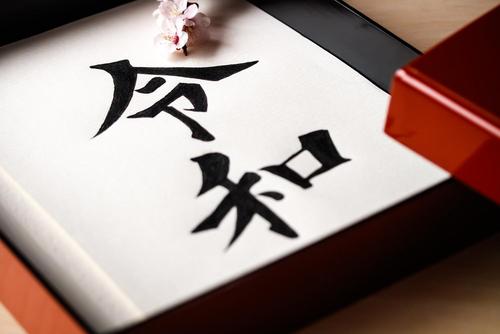
Finally, let's explain five types of Kanji typefaces from the typefaces used in Japanese calligraphy.
5 brush kanji typefaces
There are five typefaces for brush kanji, each of which is as follows.
? Seal script: A character written on a seal or a passport of a Japanese national. The corners of square kanji such as "ta" and "day" are called "tensetsu", but in the seal script, this part has the characteristic of being curved round.
? Clerical script: Characters such as "Bank of Japan notes" and "Ichimanyen" written on Japanese banknotes are written in Clerical script. It is a typeface that was born after the seal script, and the "splash" and "harai" parts are flat and characteristic, but it is also a typeface that is surprisingly rarely used in actual calligraphy.
-Regular script: A regular script is a typeface that was born after a clerical script and is also the basis of calligraphy. It is the first typeface to be learned in calligraphy and calligraphy classes, and it is also an important typeface for mastering calligraphy because it is premised that you can write a beautiful regular script when writing other typefaces or breaking the characters.
? Gyosho: A line book is also a typeface born from a slave book. It features a typeface that has a flow that looks like a slightly broken regular script, and you can write continuously without stopping the brush, or you can write with some characters omitted.
? Cursive script: A cursive script is a typeface that writes Japanese like an English cursive script. Because it can be written quickly, it is written in characters that are even more broken than the semi-cursive script. Cursive script is difficult to write and read without a certain amount of knowledge, so it can be said to be a typeface for advanced calligraphy.
[Do you care about Japan? Would you like to learn Japanese together? ]
Calligraphy beginners are recommended to learn from regular script
If you are a beginner in calligraphy, it is a good idea to learn the regular script that is often used in daily life, then practice the slightly broken line, and once you get used to how to break it, practice the cursive script that you can break or omit. ..
Summary

The origin of calligraphy is old, and it was introduced from China to Japan along with Buddhism around the Nara period. In calligraphy, which uses brush and ink to express oneself with letters, you will learn the basic actions of sitting upright, stretching your posture, and standing the brush straight, as well as the five basic typefaces. In addition to ceremonial occasions and New Year's cards, it is also good to try calligraphy as a spiritual practice.
This article is a partial re-edit of the article published in Nihongo Biyori by KARUTA.
Unauthorized reproduction or use of the contents, text, images, illustrations, etc. of this site is strictly prohibited.
CATEGORIES
FEATURED TAGS
RECOMMENDATION
-
 報BUSINESS TERMS
報BUSINESS TERMSWhat is ”Ho-Ren-So”, one of the basic manners when working in Japan?
10/30/2020
-
 伝WORDS & GRAMMAR
伝WORDS & GRAMMARWhat is easy Japanese?
10/30/2020
-
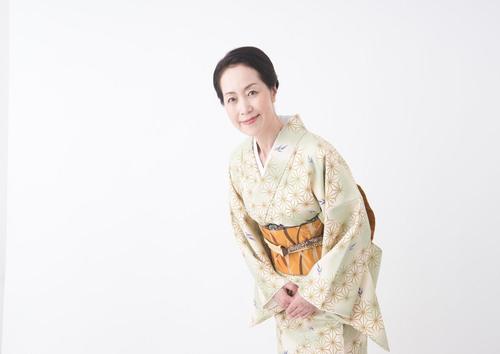 礼MANNERS
礼MANNERSJapanese greeting customs and origins. What are the greetings from other countries?
10/30/2020
-
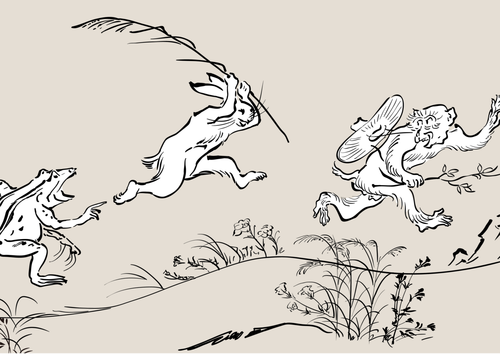 戯COMIC & GAME
戯COMIC & GAMEThe roots of animation and manga? Introducing bird and beast caricatures
10/30/2020
-
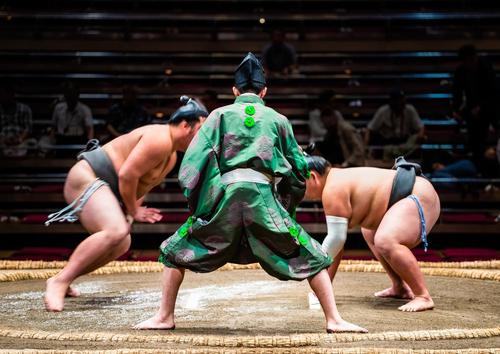 戦SPORTS
戦SPORTSThe history of sumo goes back to the mythical world! ?? Transition from myth to modern times
10/30/2020
LET’S PLAY
KARUTA!
Do you know the meaning of this...
NEXT...
FURTHER EXPLORATION
INTERESTED
IN JAPAN?
WHY DON’T YOU
LEARN JAPANESE WITH US?
START LEARNING
JAPANESE
WITH HUMAN ACADEMY!
ONE OF
THE MOST POPULAR
JAPANESE
LANGUAGE SCHOOLS
JAPANESE
LANGUAGE SCHOOL
OFFERING EXCELLENT
DETAILED LESSONS

ONLINE SCHOOL
- Learn with your classmates from all over the world
- Variety of Courses for All Needs
- FREE Trial Lesson available

TOKYO, OSAKA
- Offer the Best Curriculum for You
- Make New Japanese Learning Friends
- Many Opportunities to Practice Japanese
MAKE FURTHER
STEPS
WITH HUMAN ACADEMY!
ONE OF
THE MOST POPULAR
JAPANESE
LANGUAGE SCHOOLS
JAPANESE
LANGUAGE SCHOOL
PRODUCING MANY
JLPT N1 CERTIFIED
STUDENTS!

ONLINE SCHOOL
- Learn with your classmates from all over the world
- Variety of Courses for All Needs
- FREE Trial Lesson available

TOKYO, OSAKA
- Support Your Higher Goal of Japanese Learning
- Perfect Environment for Japanese Learners
- Learn with Your New Japanese Study Mates



